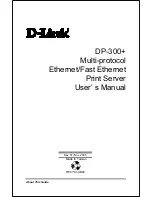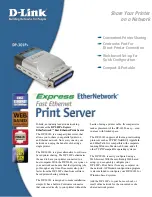
5.3.
REMOTE CONSOLE
27
part of the identity string is the user ID that has been used to log into the client system,
i.e. the system the browser runs on. The second part, behind ‘@’, is the hostname of the
client system. The last part in round brackets is the user name that was used to log into
RAS-PutIn (‘super’ in the example).
Chat Line
This is an editable text line, where a new message can be entered. Once the Enter key is
hit the message is broadcasted to every other connected party. In case a connected user
has not yet opened the Chat Frame it will be opened automatically in order to deliver the
message.
Note:
Any message sent to the Chat will be broadcasted to ALL connected users, which are using
the Remote Console at the time the message was sent. There is no option to direct a
message to a particular user only.
The Chat has no message history. That means, messages will be received only after opening
the Remote Console. Messages that possibly have been sent among other users will be lost
for a user who opens up his Remote Console afterwards.
5.3.3 RAS-PutIn Mouse Synchronization
Introduction
A common problem with KVM devices is the synchronization between the local
and remote mouse cursors. RAS-PutIn addresses this situation with an intelligent synchroniza-
tion algorithm. There are two mouse modes available on RAS-PutIn.
Direct Mode
This mode just translates the mouse movements from the Remote Console in
a way that one pixel move will lead to ’n’ pixel moves on the remote system.
This parameter ’n’ is adjustable with the scaling. The direct mode works only
when mouse acceleration is turned off on the remote system.
Automatic Mode The automatic mode tries to detect the speed and acceleration settings of
the host system automatically. See the section below for a more detailed
explanation.
Automatic mode and mouse synchronization
The automatic mode performs the speed de-
tection during mouse synchronization. Whenever the mouse doesn’t move correctly, there are
two ways for re-synchronizing local and remote mouse:
Fast Sync
The fast synchronization is used to correct a temporary, but fixed skew. Choose
the option using the Remote Console options menu (see Section
on page
or press the mouse synchronization hotkey sequence in case you defined one
(refer to Section
on page
).
Intelligent Sync If the fast sync doesn’t work or the mouse settings have been changed on the
host system, use the intelligent resynchronization. This method takes more
time than the fast one and can be accessed with the appropriate item in the
Remote Console option menu. The intelligent synchronization requires a cor-
rectly adjusted picture. Use the auto adjustment function or the manual cor-
rection in the Video Settings panel (refer to Section
on the next page) to
setup the picture.
Summary of Contents for RAS-PutIn
Page 1: ...RAS PutIn Installation and User Guide Based on Firmware 03 02 07 ...
Page 4: ...iv ...
Page 8: ...viii Contents ...
Page 12: ...xii List of Tables ...
Page 30: ...18 CHAPTER 4 CONFIGURATION ...
Page 76: ...64 CHAPTER 5 USAGE ...
Page 80: ...68 APPENDIX A GLOSSARY ...
Page 82: ...70 APPENDIX B RAS PUTIN VIDEO MODES ...
Page 88: ...76 APPENDIX D PIN ASSIGNMENTS ...
Page 92: ...80 APPENDIX F SPECIFICATIONS ...
















































